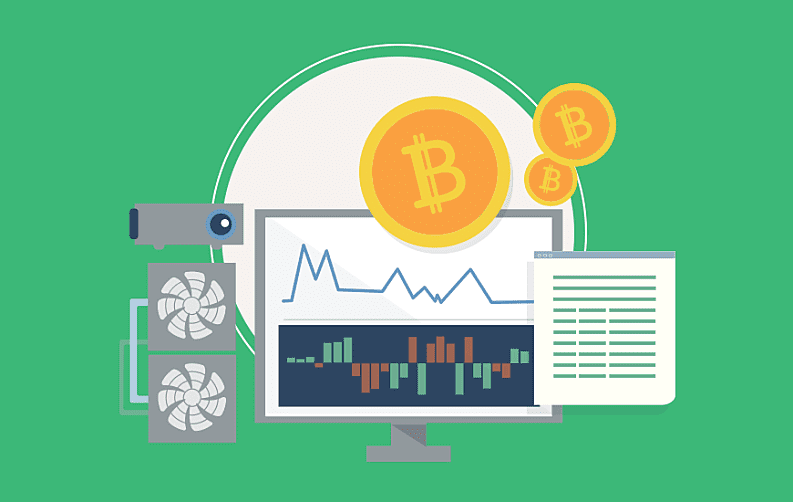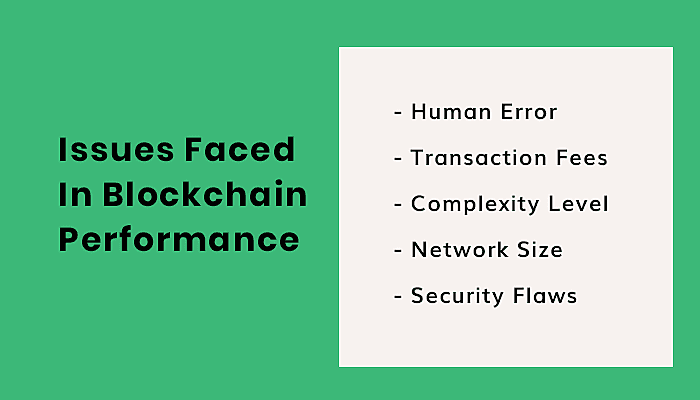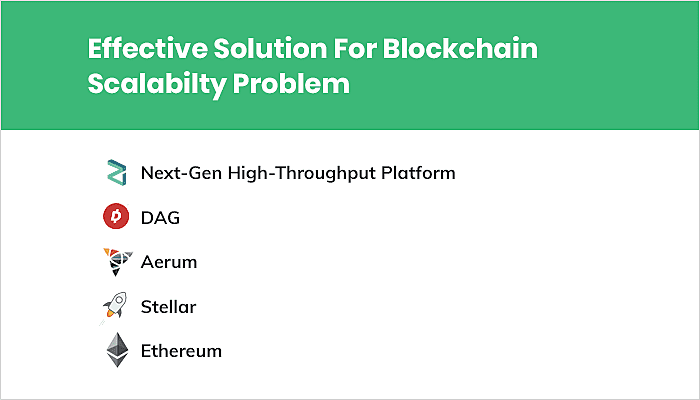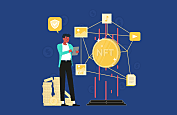
The blockchain technology is definitely one of the most inventive technologies of this decade. Surprisingly, we still haven't exploited the full potential of this emerging technology. The term ‘blockchain’ rose to fame a couple of years ago when Satoshi Nakamoto (Pseudonym) first posted his research covering the topic, over the internet.
Many tech experts have even started referring to the blockchain as 'Digital Gold' and recent statistics support this statement. In fact, the total value of this technology is likely to cross $100 billion USD.
Additionally, the blockchain technology itself consists of various other subsets, like cryptocurrencies. One of the most famous cryptocurrencies is Bitcoin, which recently completed a 10-year milestone. This is why there has been an exponential rise in the number of blockchain development companies taking shape in the recent years. But as the usage of blockchain technology is expanding, some problems regarding its performance are surfacing as well. And in this article, we will be discussing some of the major blockchain limitations, including scalability.
Blockchain Performance Issues
Just as it is with writing, teaching, researching, etc., blockchain technology also has room for improvement. Nothing can be perfect, but it can be improved to cater to human needs. Blockchain poses some serious concerns, out of which the few listed below issues that need immediate attention.

1. Human Error
One of the most common issues that directly impacts blockchain performance is human error. Let's consider the example of blockchain as a database where the information stored needs to be accurate and of high quality. But as the data storage process relies on humans, the chances of manual errors increase.
2. Transaction Fees
Network speed and transaction fees are other major blockchain technology problems. Back in the year 2016, blockchain technology could only process about six to seven transactions per second and each of those transactions had a fee of approximately $0.20 with the capacity of storing 80 bytes of data only. On the other hand, today bitcoin cryptocurrency has the lowest transaction cost and is very close to being free.
3. Complexity Level
There is a reason that the blockchain technology has still not made it to the mainstream industry verticals completely, despite its innovative features. This is because of its complexity, due to which several interesting features are left unexplored even today.
However, extra efforts are being made in this respect and more professionals are aiming towards becoming blockchain developers to understand it better and help businesses implement it.
4. Network Size
The blockchains act like distributed systems, i.e. they are not very resistant due to their anti-fragile nature. This means that they basically grow stronger with every attack on the system. For this reason, blockchain needs to have a huge network of end-users.
5. Security Flaws
In the world of technology, nothing can be 100% perfect and similar is the case with blockchain technology. A significant flaw in blockchain bitcoin is that if more than half computers acting as nodes in the system are supporting a false statement, then the false statement will become dominant and will be considered a true statement in the system.
Solutions to Blockchain Scalability Problem
The blockchain scalability problem is regarding the limits on the amount of transactions that can be done under the bitcoin network. This blockchain network has limitations as the blocks in the bitcoin blockchain are only of a certain size and frequency and thus can’t process a flood of transactions at once. This can be solved, though, with the ideas listed below.

1. Next-Gen High-Throughput Platform
A great example of a next-generation high-throughput public blockchain platform is Zilliqa, which is capable of processing hundreds and thousands of transactions per second. Also, this public blockchain platform has built-in sharding that increases its overall potential by matching the throughput benchmarks set by other payment procedures like Mastercard, Visa, etc.
Another pro to this next-gen platform is that its transactions' throughput also increases with respect to the network size of Zilliqa. Listed below are some of the key features that this platform offers:
- Gossip protocol: This feature is used for the efficient broadcasting of network messages.
- Smart Contract Language: This platform utilizes a non-Turing-complete smart contract language that further provides much better blockchain scalability solutions for advanced applications.
- Built-in Sharding: The sharding blockchain feature provides assistance in allowing new nodes to join the already existing network while dispatching the transactions to the right storage destination.
- High Transaction Rates: Zilliqa is a blockchain platform with an objective to help dApps that also need high transaction rates, for example, parallel auctions, digital advertising, payment networks, etc.
2. DAG
Directed Acyclic Graph (DAG), also known as Tangle Technology, is a blockchain solution that is built on a new approach which is primarily based on decentralized technology. Here, decentralized technology is used to solve the problem of scalability in the blockchain technology.
This new technology can also be called the solution for the machine-to-machine economy where a large number of connected devices can perform in sync to create one micro-transaction. In a DAG, a tangle consists of various edges spread out in every direction. This network then works as a one-way street for data to pass from one designated node to another.
DAG also allows multiple sidechains of blockchain to interconnect and co-exist without ever forming an additional edge with the parent node.
3. Aerum
Aerum is a blockchain platform were the end-users can experience some of the fastest transactions at a very low cost and the best part about this platform is that it operates with improved scalability. On average, Aerum targets towards delivering 500 tps on a yearly basis that may lead to more than 15 billion transactions in total. This has improved blockchain speed issues at an alarming rate.
This blockchain platform is great for launching dApps, gaming applications, social media networks, etc. Some of the other features offered by Aerum are:
- Cross-chain delegate proof-of-take (DxPoS) known as ATMOS.
- Supports 5 seconds per transaction, 16 billion per year.
- Great for dApps and no fees required for end users.
- Middleware dApp for access coordination with different sidechains.
- Helps in increasing sidechain networks performance.
4. Stellar
The next solution in this list is Stellar, which is one of the most widely used blockchain networks for measuring performance with respect to market capitalization. If we look at the recent reports released by CoinMarketCap, this platform is also ranked on the fifth position out of more than hundred cryptocurrencies.
Another thing that makes this blockchain solution stand out is the strong community of builders that support Stellar who get incentivized for working on this technology. Jed McCaleb, Founder of Stellar, also said, “It’s possible to reach approximately 4000 transactions per second. However, it really depends on the hardware that's running Stellar, so it is hard to give solid numbers”.
5. Ethereum
There are various Ethereum scalability solutions that can be used to solve the blockchain performance issue:
- Sharding: In blockchain, when it comes to providing validation to a particular section of transactions over the network, not all validators need to be in favor of it. Here, the workload is spread out over different shards, i.e. storage portions which can provide higher blockchain throughput.
- Plasma: In a blockchain, the hierarchy is categorized into parent and child blockchains, where child blockchains are regularly broadcasting commitments back to the parent blockchain.
- Raiden Network: Ethereum infrastructure also allows the user to gain value transfers off-chain, while avoiding the consensus bottleneck issue through P2P Payment channels.
Final Thoughts
Stated above are some of the best blockchain solutions to deal with the scalability issue related to blockchain performance. With the blockchain technology being integrated into various mainstream sectors, we will surely be seeing more blockchain advancements in the future and lower down the number of blockchain limitations.



















